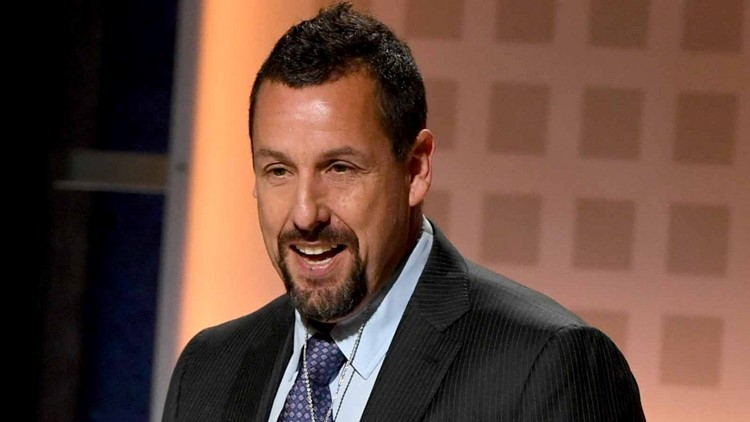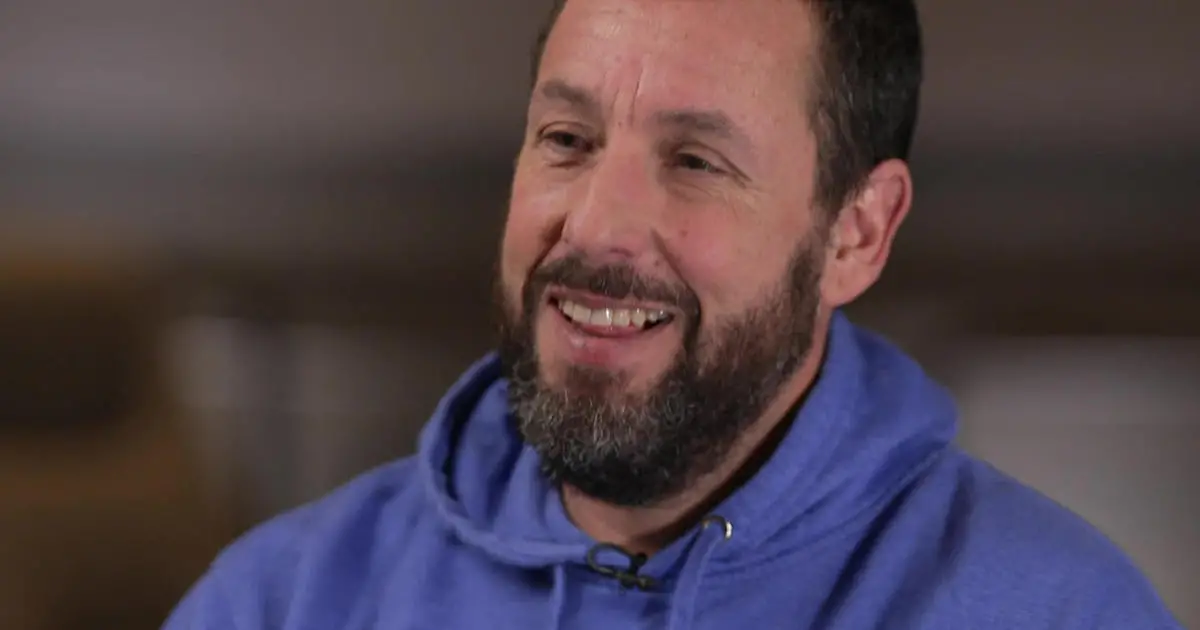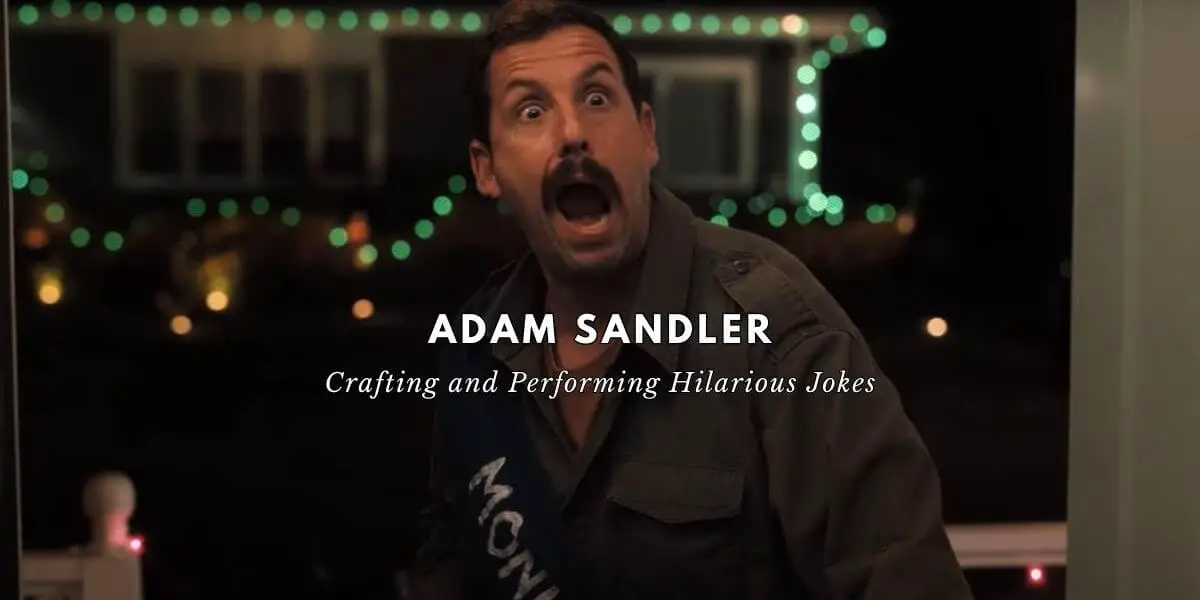Adam Sandler’s Comedy Tips: How to Write and Perform Funny Jokes That Make People Laugh
Adam Sandler is a well-known comedian, actor, and filmmaker whose comedic stylings have entertained audiences for decades. His unique approach to comedy combines irreverent humor with relatable characters, making him a favorite among comedy fans worldwide.
Whether you’re an aspiring comedian or a seasoned professional, his advice can help you improve your skills and connect with audiences in new and exciting ways.
From finding inspiration for your jokes to dealing with hecklers and other challenges, Sandler’s tips cover a wide range of topics that are essential for anyone looking to succeed in the world of comedy.
So, if you’re ready to learn from one of the best in the business, read on and discover how to write and perform funny jokes that will have people laughing out loud.

Understanding Adam Sandler’s Approach to Comedy
Adam Sandler is known for his unique style of comedy that encompasses a blend of physical humor, witty one-liners, and creative storytelling. Analyzing technique, it can be observed that Sandler’s comedic timing is impeccable, as he knows how to set up a joke, build anticipation, and deliver the punchline with precision.
His approach to comedy is not just limited to writing jokes but also involves the use of his body language, facial expressions, and delivery style to enhance the humor.
Sandler’s approach to comedy is not just about making people laugh but also about connecting with his audience on an emotional level. His jokes often revolve around relatable experiences, everyday situations, and common human behaviors, making them more accessible to his viewers.
By analyzing his technique, one can learn valuable lessons about the art of comedy, such as the importance of timing, delivery, and the use of relatable content.

Finding Inspiration for Your Jokes
The process of discovering sources of inspiration to create humorous content requires a meticulous approach and a keen observation of the world around us, as emphasized in the current section of this discourse.
Brainstorming techniques play a crucial role in this process, where one can generate ideas by writing down anything that comes to mind, no matter how absurd or unrelated it may seem.
By exploring various topics, one can find humor in everyday life, such as in the mundane tasks of daily routine, the quirks of human behavior, or the idiosyncrasies of different cultures.
Furthermore, finding inspiration for jokes requires a constant awareness of one’s surroundings and the ability to see things from a fresh perspective. It involves observation, curiosity, and a willingness to take risks and experiment with different ideas.
While some may find inspiration in their personal experiences, others may look to current events, pop culture, or even historical events to find material. Ultimately, the key to finding inspiration for your jokes lies in developing a unique perspective and voice, which will enable you to connect with your audience and deliver your jokes with confidence and authenticity.

Writing and Crafting Your Jokes
Crafting punchlines is essential when creating jokes that make people laugh. A punchline is the final part of a joke that delivers an unexpected twist or surprise. It is the culmination of the setup and the delivery and is what makes the joke funny.
To craft punchlines that work, it is important to hone comedic timing, pacing, and the rhythm of the joke. This involves knowing when to pause when to speed up or slow down, and when to emphasize certain words or phrases. Comedic timing is crucial for delivering punchlines with maximum impact.
Another aspect of crafting successful humor is the structure of the joke itself. One method is the rule of three or the three-item list. This involves presenting a list of three items, with the last item being the punchline.
For example, “I told my wife she was drawing her eyebrows too high. She looked surprised. She then looked confused. She then looked angry.” The last item in the list is the punchline, which reveals the unexpected twist.
Another method is the callback, which involves referring back to a previous joke or moment in the routine. This creates a sense of continuity and builds on the earlier laugh, leading to a bigger payoff. Overall, crafting successful humor involves attention to timing, structure, and delivery to create jokes that are funny and engaging.

Testing and Refining Your Material
Aspiring comedians face a daunting task: testing and refining their material. This involves performing in front of small groups, fine-tuning your delivery, and incorporating feedback from audience members and fellow performers.
Performing in Front of Small Groups
Executing successful performances in front of smaller audiences necessitates a distinct set of skills and techniques, as opposed to larger crowds. One of the most important factors to consider is stage presence.
Comedians who perform in front of small groups must be able to connect with their audience and build a rapport with them. This means being aware of body language, facial expressions, and tone of voice. It also means being able to adjust to the energy of the crowd and respond to their reactions in real-time.
Another crucial aspect of performing for smaller audiences is engaging the audience. This involves finding ways to involve the audience in the performance, whether through crowd work, improvisation, or other interactive techniques. Comedians who can successfully engage their audience will create a more intimate and personal experience for the audience, which can lead to bigger laughs and a more memorable performance.

Fine-Tuning Your Delivery
Refining one’s delivery through careful analysis and adjustment of timing, pacing, and emphasis can enhance the impact and effectiveness of a comedian’s performance.
Improving timing is crucial to making the punchlines land and ensuring that the audience is kept engaged throughout the set. A well-timed pause or a strategic change in tone can make all the difference in how a joke is received.
Additionally, enhancing stage presence can help a comedian connect better with the audience and establish a stronger rapport. This includes making eye contact, using gestures, and moving around the stage with purpose.
In order to fine-tune one’s delivery, it is important for comedians to record and review their sets. By analyzing their performances, they can identify areas that need improvement and adjust their delivery accordingly.
Incorporating Feedback
Receiving critique is an essential part of honing one’s craft as a comedian. It is crucial to be open to constructive feedback from trusted sources to improve material and elevate performances.
Feedback helps comedians identify areas of improvement, such as timing, delivery, and material selection, that may not be immediately evident to them.
Additionally, feedback from audiences can help comedians gauge the effectiveness of their jokes and adjust their material accordingly. It is important to approach feedback with an open mind, even if it may be difficult to hear. Comedians should keep in mind that critiques are not personal attacks but rather opportunities to grow and improve.
They should also seek feedback from a diverse group of sources to obtain a well-rounded perspective on their performances. Incorporating feedback into one’s routine can be a challenging process, but it can ultimately lead to more engaging and effective performances that connect with audiences on a deeper level.

Developing Your Performance Skills
Improving timing is a crucial aspect of honing one’s performance skills. Timing involves the ability to deliver a joke with precision, to pause for effect, and to adjust the delivery based on the audience’s reactions.
One way to improve timing is to practice in front of a mirror and pay attention to the timing of each joke. Another way to improve timing is to record performances and analyze the delivery, noting areas for improvement.
Enhancing stage presence is another critical component of developing performance skills. Stage presence is the ability to command the stage and engage with the audience. It involves body language, eye contact, and vocal projection. To improve stage presence, performers can practice standing tall, making eye contact with the audience, and projecting their voice to the back of the room.
Performers can study the performances of successful comedians and take note of their stage presence techniques.

Dealing with Hecklers and Other Challenges
As performers, comedians inevitably encounter challenges on stage. Hecklers, for instance, can be a major distraction and a source of frustration. Addressing hecklers in a way that is both humorous and assertive is a crucial skill for any comedian.
Adam Sandler advises comedians to stay calm, not to take hecklers personally, and to use improvisational skills to come up with clever comebacks that will put the heckler in their place.
Dealing with hecklers requires a certain level of improv skills that can be developed with practice. Improv is an essential aspect of comedy, and comedians who can improvise on stage are often more successful in engaging their audience. It involves thinking on your feet, being present in the moment, and being able to adapt to unexpected situations.
As Sandler notes, practicing improv can help comedians be better prepared to handle hecklers and other challenges that may arise during a performance.
Taking Your Career to the Next Level
Successfully navigating the entertainment industry requires more than just being funny. Networking and building relationships are crucial for comedians to advance their careers. Developing a unique brand is also essential, as it helps comedians stand out in a crowded field.
Networking and Building Relationships
Developing professional relationships and networking are crucial elements for individuals seeking success in the comedy industry. Building rapport and cultivating connections can open doors to new opportunities and help comedians gain traction in the competitive field.
One way to start building connections is by attending comedy shows and events, where you can introduce yourself to other comedians, producers, and industry professionals.
Another effective way to network is through social media platforms such as Twitter and Instagram, where you can connect with other comedians and share your work with a wider audience.
To make the most out of networking, it is important to be authentic and genuine in your interactions with others. Rather than solely focusing on promoting yourself, take the time to get to know other comedians and industry professionals and show a genuine interest in their work.
Building professional relationships and networking are essential steps in the journey towards becoming a successful comedian.

Developing a Unique Brand
In today’s entertainment industry, creating a unique brand is crucial to stand out in a crowded market. Adam Sandler is a master at developing his own persona and brand, which has helped him achieve success in both his writing and performing.
By developing a distinct and identifiable brand, Sandler has created a loyal fan base that looks forward to his next project. To create a persona, it is important to identify your unique style and voice. This can involve experimenting with different types of humor and finding what works best for you.
Once you have identified your style, it is important to consistently incorporate it into your writing and performance.
By doing so, you can build a recognizable brand that sets you apart from others in the industry.
Navigating the Entertainment Industry
Navigating the entertainment industry requires a strategic approach that incorporates a unique brand and constant skill development to increase the chances of success. However, even with a strong brand and refined skills, the industry is still highly competitive, and rejection is a common occurrence.
Therefore, networking strategies are crucial for aspiring comedians to gain exposure and build connections within the industry. Networking can take many forms, from attending industry events to utilizing social media platforms.
Building relationships with professionals in the field can lead to opportunities for gigs, collaborations, and even representation.
It is also important to remember that rejection is a natural part of the industry, and learning to handle it with grace and professionalism can go a long way in establishing a positive reputation and opening doors for future opportunities.
By staying persistent and continuing to hone their craft while actively seeking out connections, comedians can increase their chances of success in the entertainment industry.
Bottom Line
Adam Sandler’s approach to comedy is a valuable resource for aspiring comedians. To succeed in the comedy world, it is crucial to have a strong understanding of what makes people laugh. Sandler’s approach emphasizes the importance of finding inspiration in your own life experiences and using those experiences to create relatable and funny material.
Crafting jokes that resonate with your audience is key, and Sandler’s tips on testing and refining material can help comedians hone their material until it is perfect. As a comedian, it is also important to have strong performance skills.
Overall, Adam Sandler’s comedy tips offer a valuable resource for aspiring comedians. With his guidance, comedians can learn how to write and perform funny jokes that make people laugh, and take their careers to the next level.
Whether you are just starting out or looking to improve your skills, Sandler’s approach is a valuable resource that can help you succeed in the competitive world of stand-up comedy.





12 comments
I found your article very informative and helpful as you taught us to understand the Adam Sandler’s approach to comedy and how we can find inspiration in our own life experiences and use those experiences to create relatable and funny material. Thanks for sharing such useful and inspiring article, it is really helpful.
WOW…. GREAT
Very relevant tips, found them very helpful now I can make funny jokes, these tips made a comedian out of me
Very relevant tips ,I found them really helpful even though I’m not a comedian ……yet
This is very helpfull article
This is so interesting….and it makes me feel happy when am sad
This is so interesting…I love this article such…i makes me feel happy when when am sad
My favourite actor.thanks for sharing and writing this article
his talents as a funny man are outstanding, In Funny People film could also be cataloged as a serious performance, the stand-up part of the movie is so funny
Great tips, Adam! I’ve always enjoyed your comedy and it’s fascinating to get a glimpse into your creative process. Your advice on finding the unexpected punchline and adding personal experiences definitely resonates with me. Thanks for sharing your wisdom!
This is really helpful platform
wow great artekl keep going i like it sehr